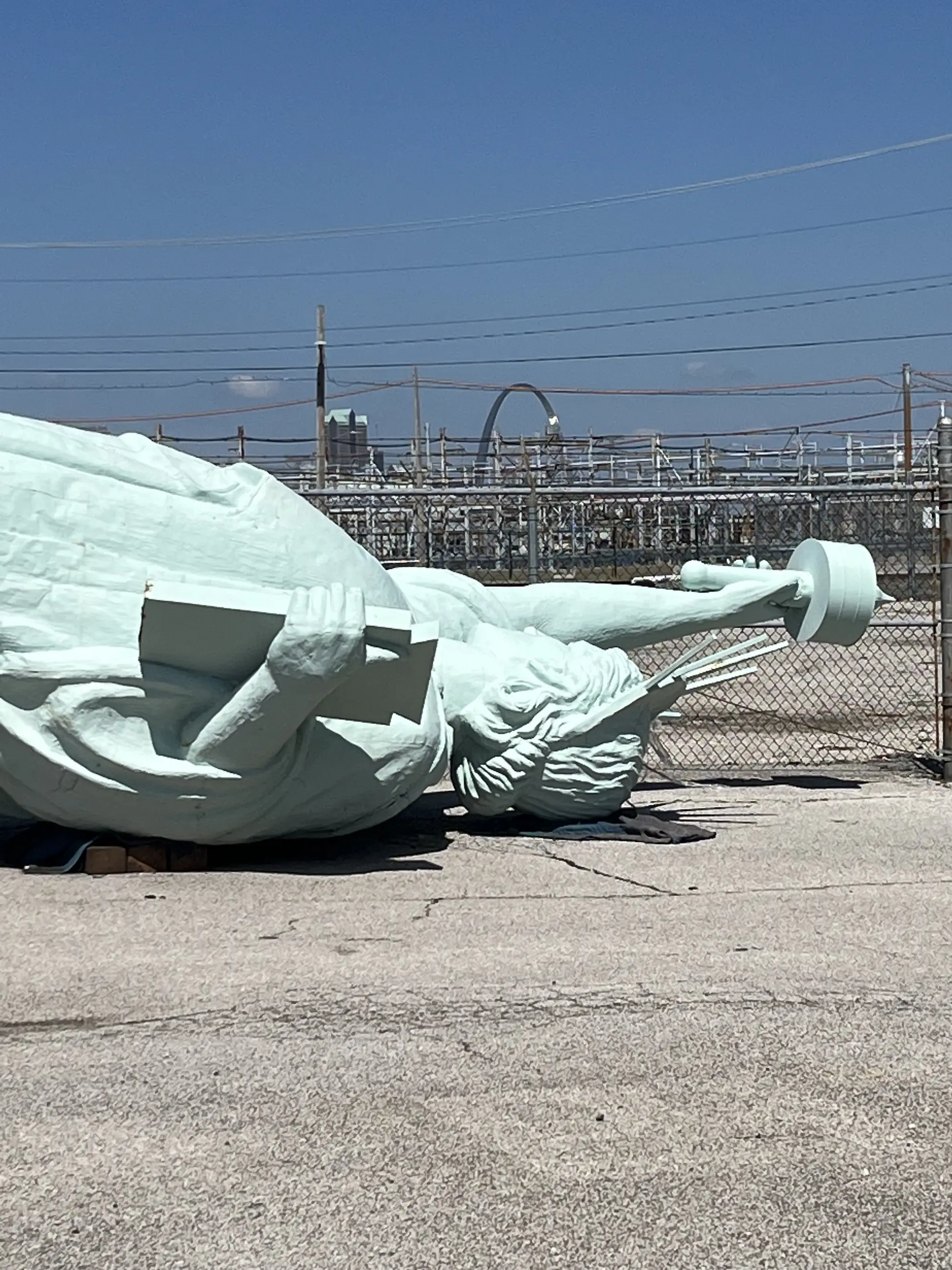
“Little Liberty” at the National Building Arts Center. Photo © Architectural Record
It’s a jarring juxtaposition—the Statue of Liberty laid down on its back with St. Louis’s Gateway Arch looming in the background. Where, exactly, would one find this improbable scenario featuring two icons of Americana? The answer is just as unlikely.
Across the Mississippi River from St. Louis, in Sauget, Illinois, is the National Building Arts Center (NBAC). The research library and warehouse facility’s 13-acre campus, which occupies the site of the former Sterling Steel Casting Company foundry, holds a wealth of building artifacts from all over the country. (The above-mentioned, much beloved 30-foot-tall “Little Liberty” had stood on the roof of the Liberty Storage & Warehouse Company on West 64th Street in Manhattan for just over 100 years until that building was converted to condos in 2003.)
NBAC’s collection originated from the architectural salvage business of its founder, the late Larry Giles (1947–2021). Under his leadership, the institution became the world’s largest repository of several categories of building-related materials, and its research library now contains more than 300,000 books, periodicals, construction drawings, and trade catalogues related to architecture, the building and transport industries, and the allied arts (including an almost-complete archive of Architectural Record back issues).
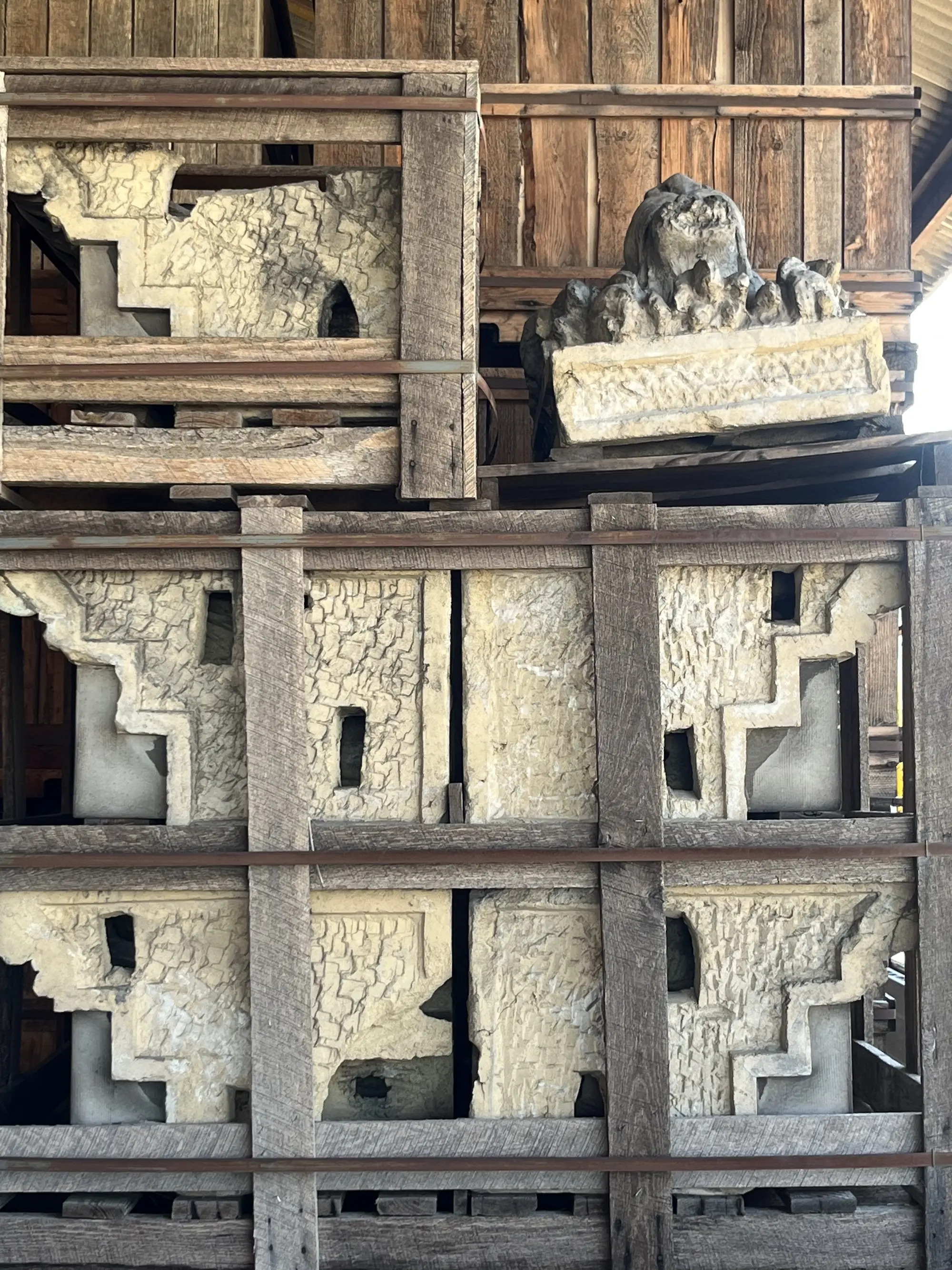
1
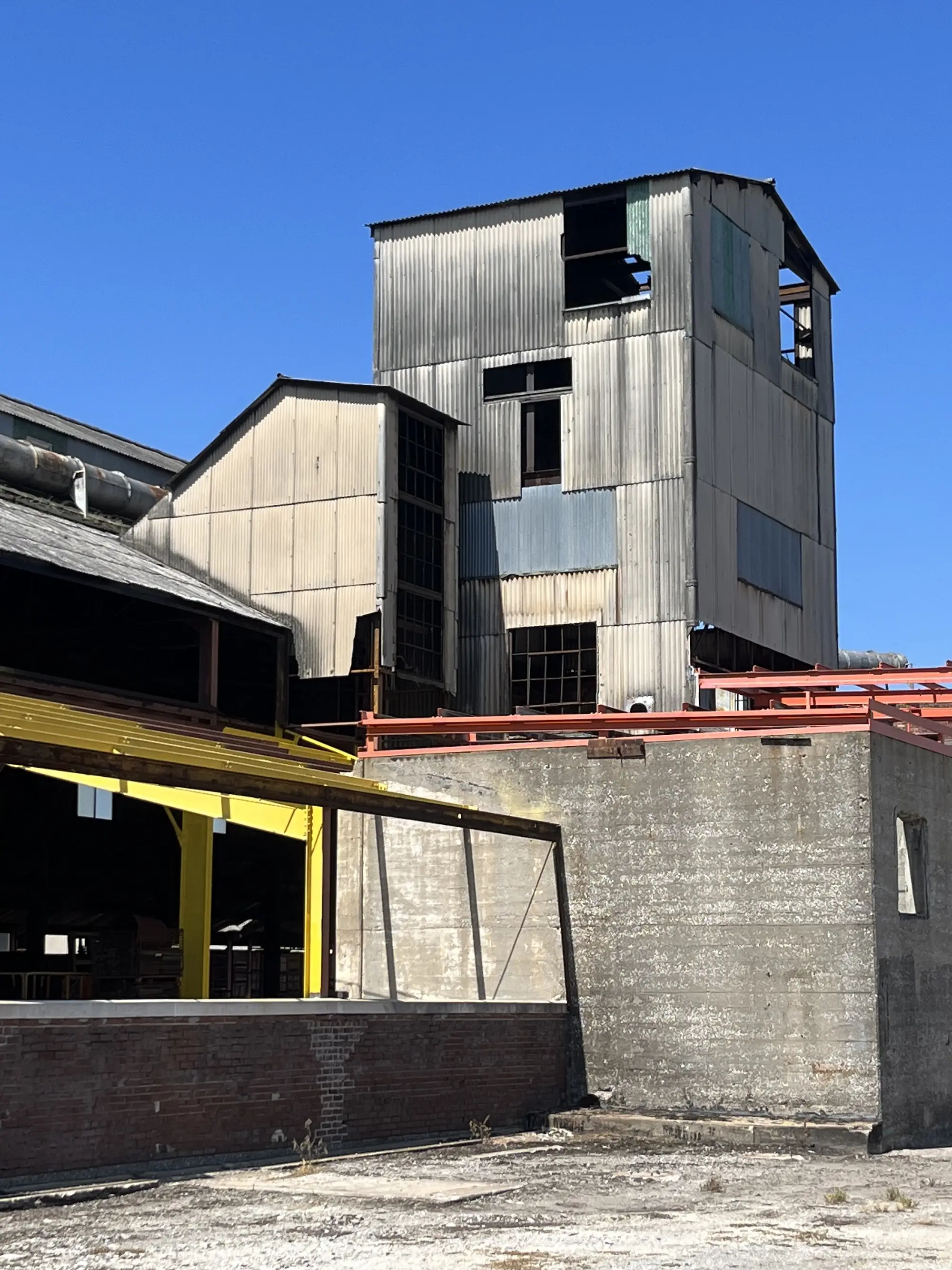
2
Architectural salvage (1); kept at the NABC (2) in Sauget, Illinois, outside of St. Louis. Photos © Architectural Record.
A selection of artifacts from that collection is currently on display at the Pulitzer Arts Foundation in St. Louis. Organized by current NBAC executive director Michael Allen with Pulitzer Arts Foundation curator Stephanie Weissberg, Urban Archaeology: Lost Buildings of St. Louis presents dozens of objects ranging from a theater facade to hand-pressed clay bricks. The decorative aspects of many of those pieces contrast with the stark minimalism of Tadao Ando’s 2001 museum building.
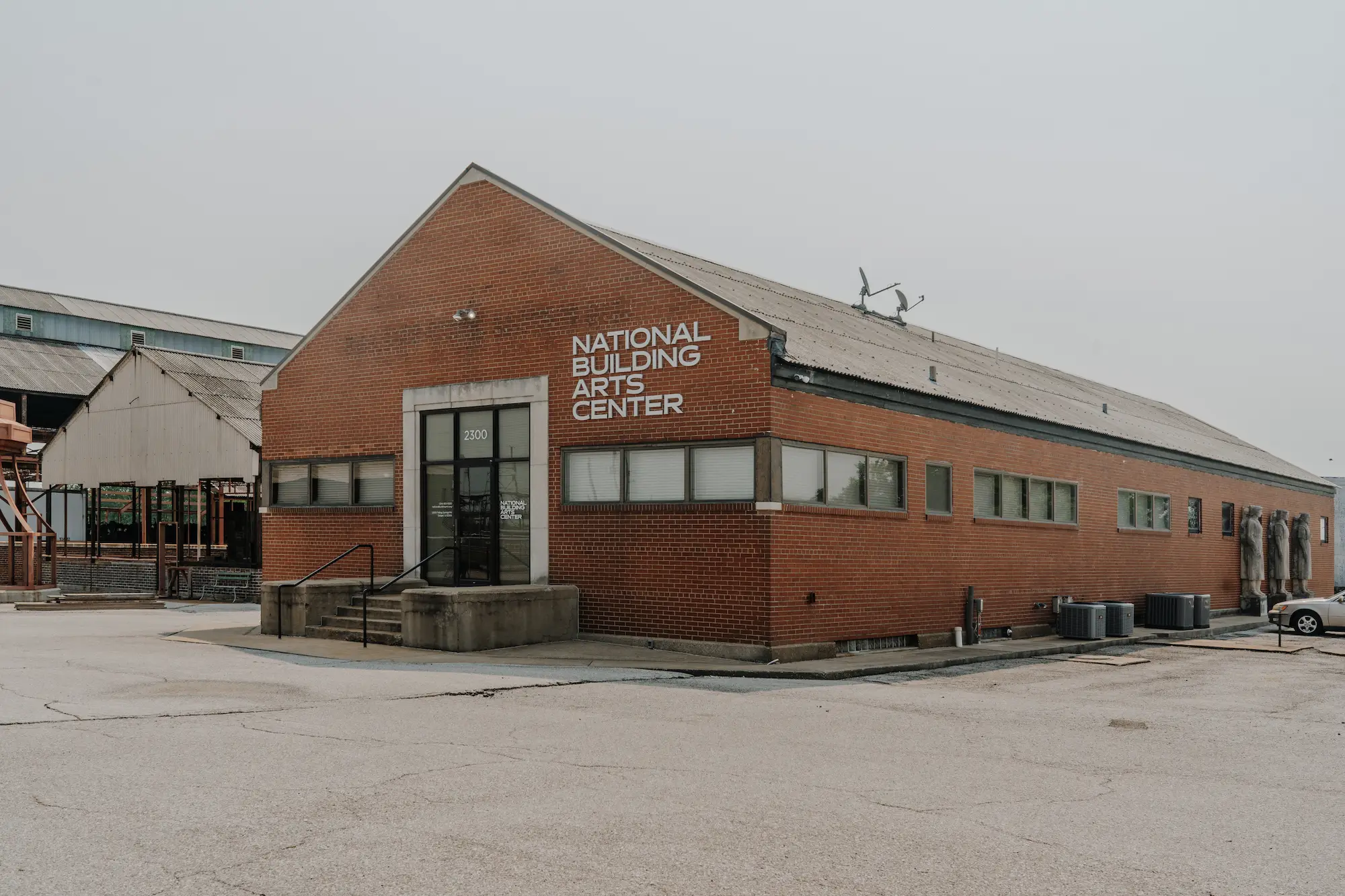
3
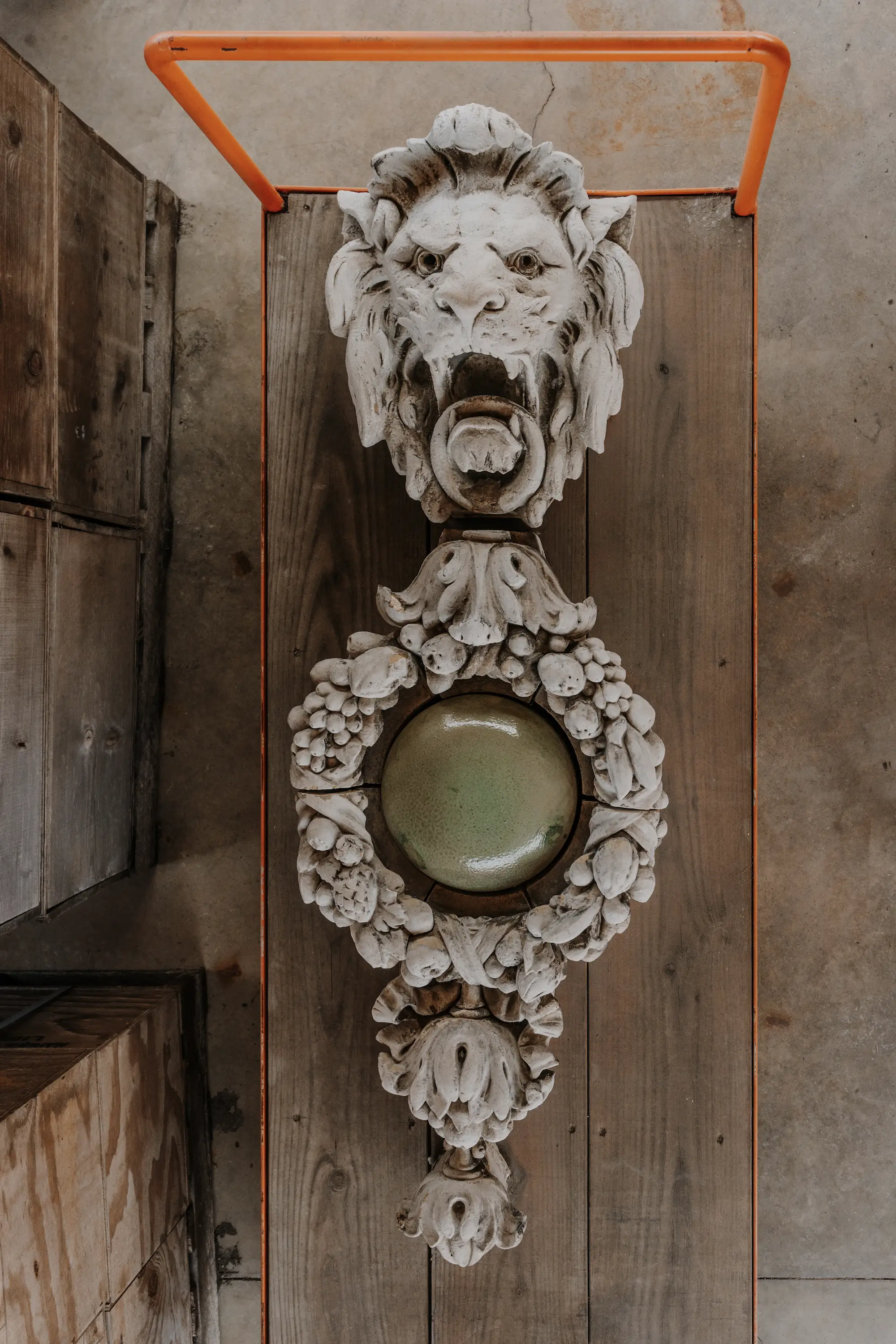
4
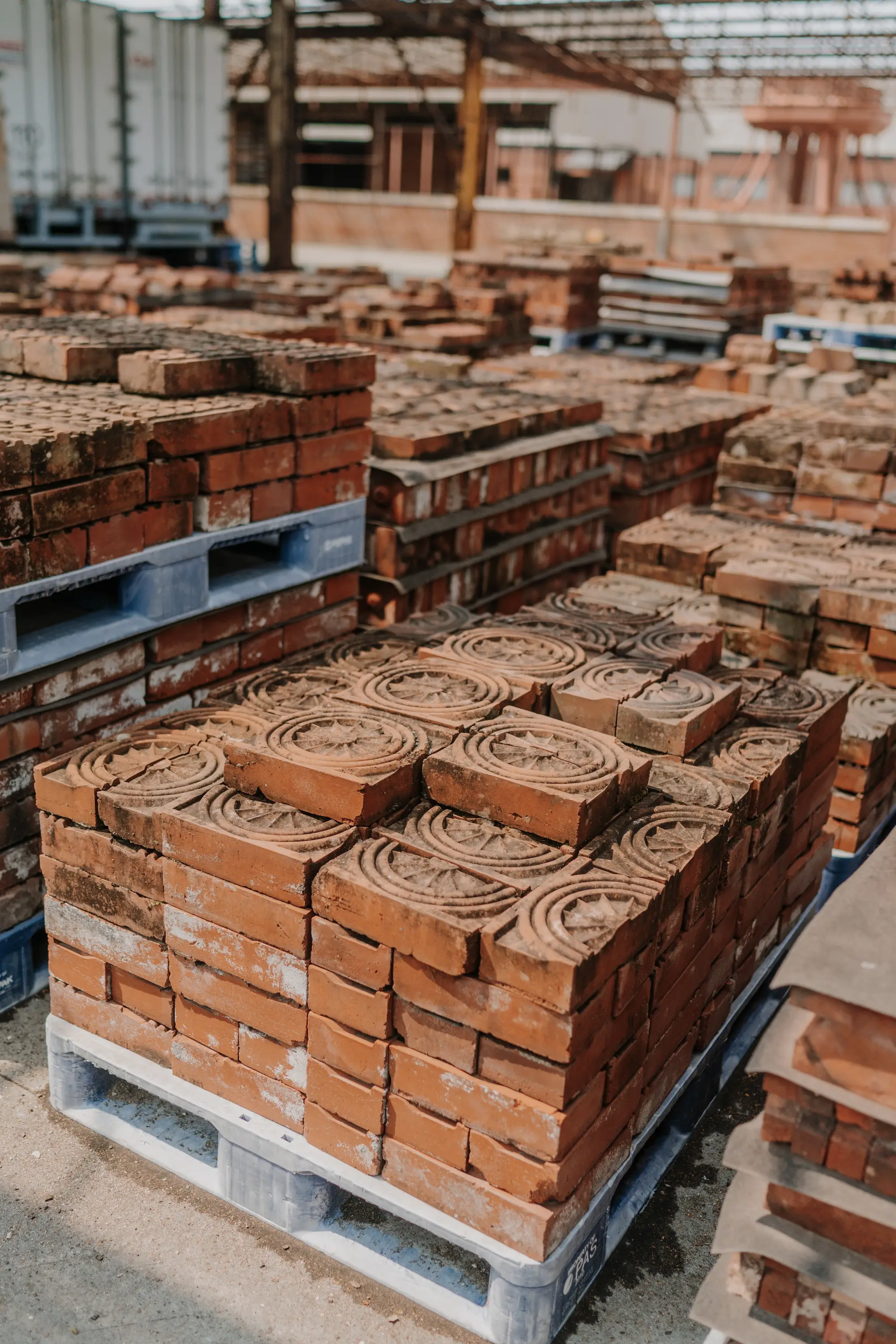
5
Library and archives building at the NBAC campus (3); just a small sampling of the trove of St. Louis-sourced objects held in its collection include a terra-cotta lion's head pendant (4) and hand-pressed ornamental bricks (5). Photos © Virginia Harold, courtesy Pulitzer Arts Foundation
But these often-ornate objects are not just a reminder of the beautiful handicraft that went into buildings of earlier eras—the first known example of polychromed glaze on a major commercial building in the U.S. is in the exhibition—or the different approaches to historic preservation. “Urban Archaeology is intended to spark discussions about St. Louis’s past and future,” says Pulitzer executive director Cara Starke. The fluted columns from a Palladian-style, antebellum mansion on Cass Avenue with Confederate ties, said to represent an early application of cast iron on a residential building, and a terra-cotta lion’s head pendant on display speak to opposite sides of the city’s racial dividing line. The lion’s head adorned the facade of a demolished building that also stood on Cass Avenue, in the Jeff-Vander-Lou neighborhood of North St. Louis. For almost a century, the surrounding area experienced racially discriminatory zoning practices, a troublesome number of vacancies, and failed urban renewal projects, including the now-demolished Pruitt–Igoe housing development.
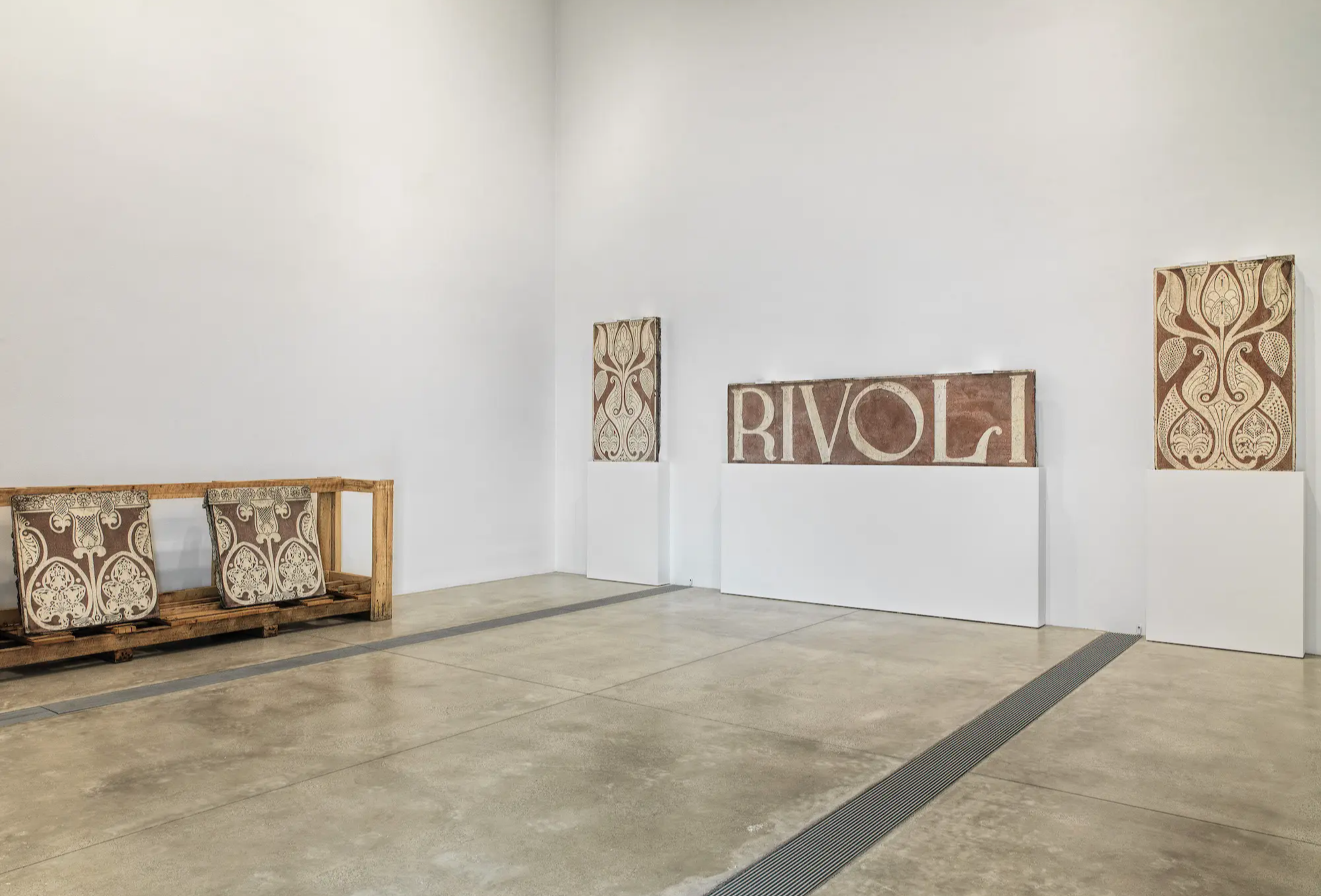
6
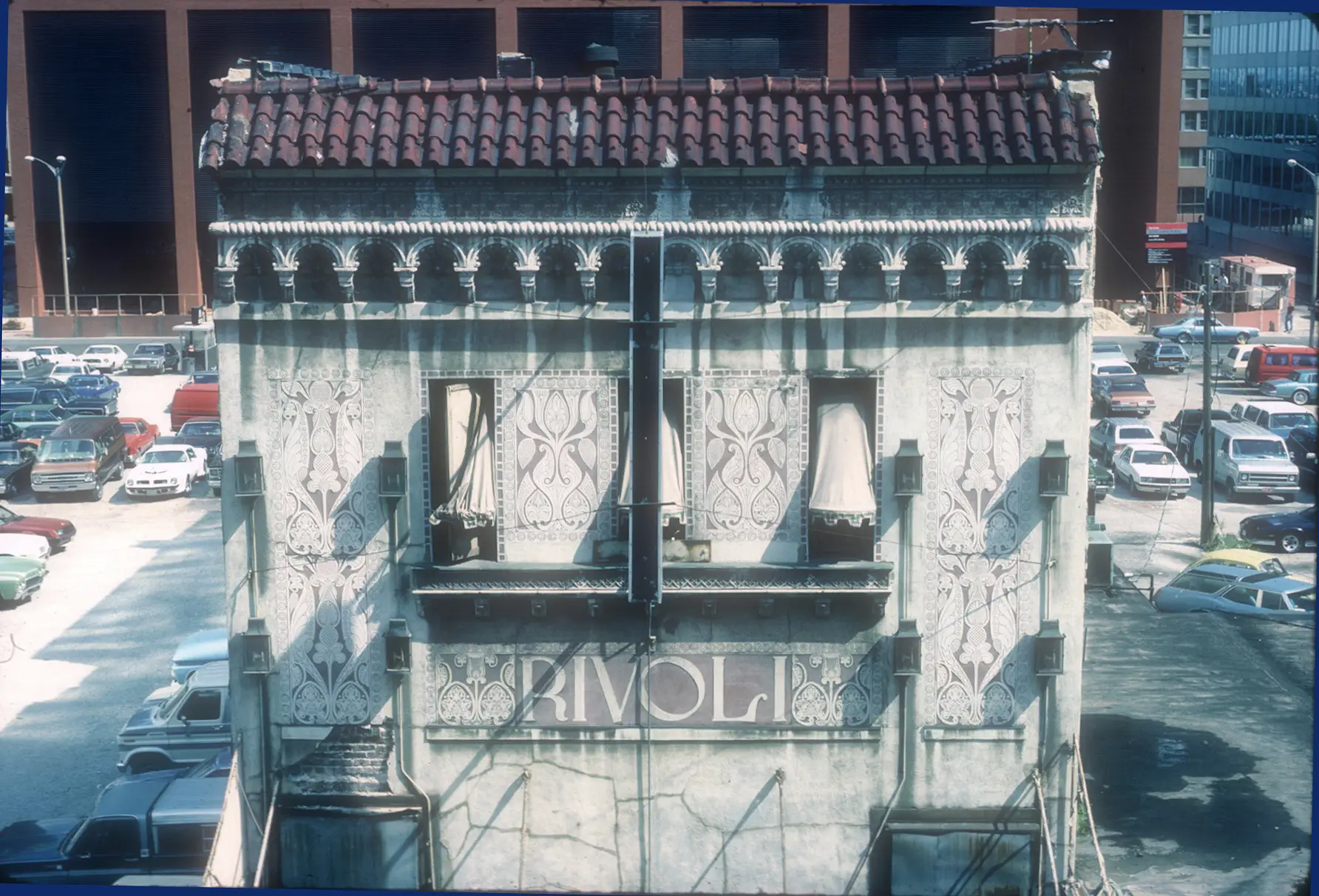
7
Salvaged sgrafitto panels (6) from the old Rivoli Theater, later the Towne Theater, in St. Louis (7) on display at Urban Archaeology. The landmark 1922 building was demolished in 1983. Photos © Alise O' Brien, courtesy Pulitzer Arts Foundation (6), courtesy NBAC (7).
“Urbanists often cite St. Louis as a city that represents what has played out in other areas of the U.S.,” says Weissberg. “This exhibition will contribute to a deeper understanding of the social and economic forces that have shaped our American cities.”
Urban Archaeology: Lost Buildings of St. Louis runs through February 4, 2024. NBAC currently offers limited access to collections through guided tours, and its research library is open by appointment.






Post a comment to this article
Report Abusive Comment